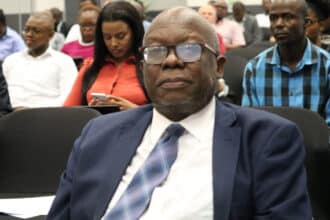Botswana shows bright prospects with untapped mineral wealth
Prospecting data ready to be turned into mines – BGI
Botswana is one of the countries in the world with successful mining stories thanks to a proper coordinated mining of diamonds and other minerals.
While diamonds have played a key role in developing Botswana from one of the poorest countries at independence to a middle income state, Botswana Geoscience Institute (BGI) Chief Executive Officer, Olefile Mashabila, says there are many critical minerals which remain untapped and can bring massive financial benefits and investment opportunities.
Speaking at the emerging mine to market value chain panel discussion at the Global Expo 2023, Mashabila said the future of mining in Botswana is still quite bright despite mining having started in the late 60s.
“For a long time we have mined diamonds, copper, coal and salt for some time but I can assure you that we have additional 100 years of mining all these resources. For critical minerals, we have only mined copper locally. We haven’t touched many of them. Of recent there is a discovery of manganese in Kanye which is probably the second biggest deposit in Africa. Very soon we should open a mine there,” said Mashabila indicating that 90 000 square kilometers of land in northern Botswana has mineral potential of zinc, silver and nickel.
Botswana produces diamonds, coal, soda ash, copper, nickel, silver, gold, industrial minerals and semi-precious stones. Other known deposits are uranium, iron ore, coal-bed-methane and platinum group metals (PGMs).
“We also have plenty of platinum group minerals in the Ghanzi-Chobe belt. As we speak we have more than 600 active prospecting licenses of critical minerals. For Botswana we have a list of over 30 and we have only mined copper and nickel. The rest we haven’t touched them so there is a potential. We have prospecting information which is very ready to be turned into mines,” said Mashabila, sharing that 25 percent of eastern Botswana is covered by rocks while 75 percent of the western side is covered by sands but still they have managed to explore it.
Of late Botswana has opened three mines in western Botswana which is mostly the Kalahari Copper belt which has housed Khoemacau and Motheo Copper Mines and Ghagoo Diamond Mine in Central Kalahari Game Reserve.
Meanwhile, in the recent mining production statistics released by Statistics Botswana, copper and silver production went up significantly in the second quarter of 2023. Copper in Concentrates increased by 50.9 percent (5, 408 tonnes) from 10, 619 tonnes registered during the second quarter of 2022 to 16, 027 tonnes during the period under review. The quarter-on-quarter analysis also shows that production increased by 7.8 percent (1, 155 tonnes) from the 14, 872 tonnes produced during quarter one.
Silver production increased by 55.4 percent (4, 178 kilograms) from 7, 542 kilograms in the second quarter of 2022 to 11, 720 kilograms in the period under review.
However, the quarter-on-quarter comparison shows a 6.9 percent decrease (862 kilograms) from the 12, 582 kilograms produced during Q1.





